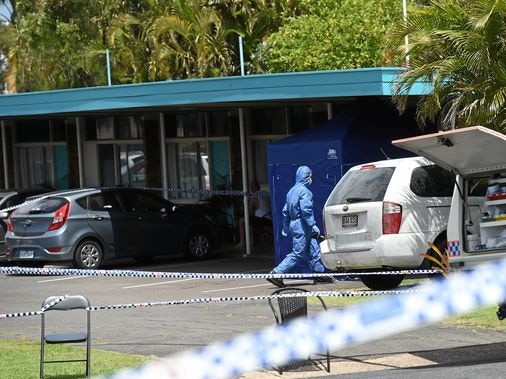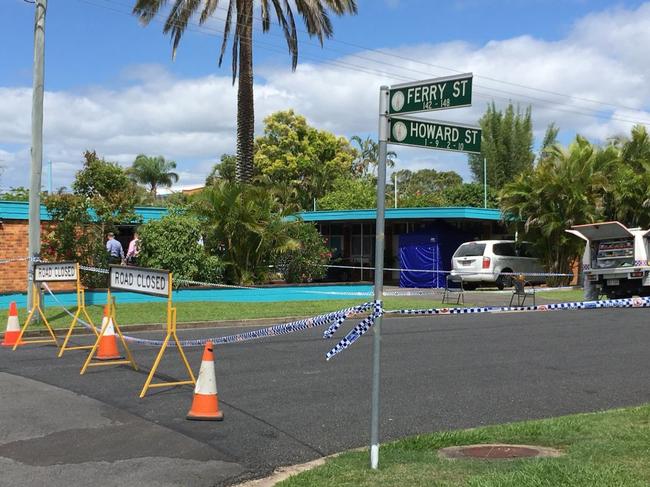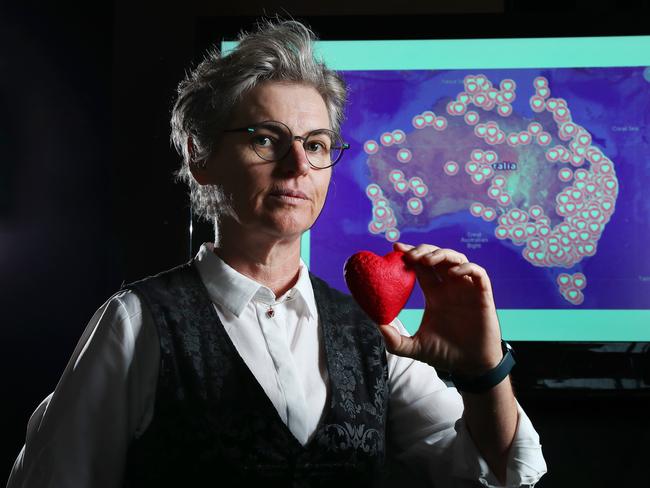‘Invisible victim’: Remembering murdered woman Linda Lovett
Despite the recent sentencing of her killer, little is known about a woman who tried to fight a crazed loner off as he repeatedly stabbed her at a Queensland motel. This is why we must never forget her:
Fraser Coast
Don't miss out on the headlines from Fraser Coast. Followed categories will be added to My News.
Her name was Linda Lovett. She was 58 when she died.
We know she was a fighter, because the day she was murdered in a small Maryborough motel room, she battled to get away from her killer, who was attacking her with a knife he had packed before heading out to meet her.
On that day, November 3, 2018, she tried to protect herself.
In addition to the 26 stab wounds on her body (one to her neck would prove fatal) she had defensive injuries to her hands.
There is an unspoken hierarchy of victims when it comes to media coverage and public sympathy.
It is something my colleague Sherele Moody, an award-winning journalist and femicide researcher, women and child safety advocate and founder of The RED HEART Campaign, has written about.
The focus is on white, young to middle aged victims, attractive, with no “complications” – the so-called “perfect” victims.

By that measure, I realised while sitting in court, listening as Ms Lovett’s murderer was sentenced, she was practically at the bottom.
Ms Lovett was a Thai sex worker, made vulnerable because of her profession and also stigmatised by it.
Her family lived overseas and, as police progressed quickly on tracking down her killer, they did not need to investigate her connections in Australia.
We don’t have so much as a photo.
When I picture her, all I have is what I imagine, horrific scenes as she tries to flee the room at the Maryborough City Motel.
On the day her killer was sentenced, his family sat in the courtroom supporting him.
The other side of the courtroom, where the victim’s family would typically sit, was empty but I thought about those who had loved her.
How their lives had been forever changed.
How Ms Lovett’s life had been brutally cut short, for absolutely no reason other than, as the court would hear, her twisted young client, who had long fantasised about killing someone and decided she was the “random b****” he was after.
The sense of responsibility to not only to report on justice being served that day but also to share the story of Ms Lovett, to ensure in some small way she wouldn’t be forgotten, was palpable.
The challenge was there was so little to share, because I knew nothing of the woman who died that day.
In the weeks since the sentencing, I’ve felt haunted by this stranger.
Ultimately, in the absence of other information, we can at least be sure she was courageous, with the Crown Prosecutor telling the Maryborough Supreme Court that even as she was hunted, Ms Lovett tried to escape, screamed so neighbours would hear her and made it out the front door before succumbing to her injuries.
While covering Ms Lovett’s murder, I called St Paul’s Anglican Church and asked Reverend Sue Wilson to light a candle for her.
She promised she would. She would also pray.
I called the detectives who worked on her case, who ensured she would have justice.
They too knew little about her, but spoke of the satisfaction of ensuring the man who brutally murdered her would spend decades behind bars.
For that, I am also grateful – justice is not always blind.

Too often though, as Ms Moody has found, the community can be.
She spends much of her time fighting for victims to be heard, remembered, for justice to be done, with the hope of ending the violence.
“I’ve been researching the killing of women and children for quite a few years now,” she said.
“Linda’s death mirrors that of many other women from multicultural or otherwise diverse backgrounds in a number of ways.
“The first being that her murder pretty much slipped under the radar of Australians – often killed women who are not young, beautiful, middle class to well off or prominent socially do not garner community outrage.
‘Their murders are rarely the subjects of vigils or calls to action.
“This is particularly so when women of Asian background are killed.
“I believe a number of factors come into play here and they are all complex.
“These women may not have vocal family members or friends who are willing to speak to media about their loved one, there are often language barriers and often their loved ones live overseas.
“In Linda’s case, this situation is made worse by her occupation – the murders of sex workers just do not ignite broad rage like the killing of women by intimate partners.”
Sometimes victims could not be named, or their photos could not be shown. But they should never be forgotten, Ms Moody said.
“Around 30 per cent of the victims I’ve documented cannot be named or their picture shown for a variety of reasons but this should not mean they remain unrecognised,” she said.
“The first thing, from my perspective, would be for the community to come together and hold a vigil for her.
“I also feel it would be appropriate for the region to have a small memorial set up in her name – be it marker carrying her name in the area when she was killed or a small memorial plaque in one of the region’s public gardens.
“I think it is also vital for people to know her story so media reporting is key here and there’s also the opportunity for people to read about her on the Australian Femicide Map and the Memorial to Women and Children Lost to Violence.”
“Being able to put a face to a name is so important when it comes to the murders of women.

“It saddens me very much that there are so many invisible victims like Linda – that their lives are wiped out by violent men and their memories wiped out by a lack of photographs, words from family and friends and erasure in many ways by the legal system.
“Keeping the stories of dead women in the public sphere is one of the ways we humanise dead women and also one of the ways that we change the story on Australia’s shocking epidemic of violence.”
Ms Moody encouraged the Maryborough community to come together to remember Ms Lovett and all victims of violence.
“I cannot think of a more important role for the local community to play.
“Linda was more than her work, she was more than her ethnicity and she was more than her ending. She was a woman who laughed, cried and loved just like the rest of us.
“If this little community could step up and make her a memorial, it would be the greatest gift her family could receive.
“It would show that Australians really are determined to do better in the bid to end violence against women.”
Fraser Coast Mayor George Seymour said he knew Maryborough’s heart was big enough to embrace the memory of Ms Lovett.
He said the council would investigate a memorial plaque or bench in her honour so her name would forever be remembered.




